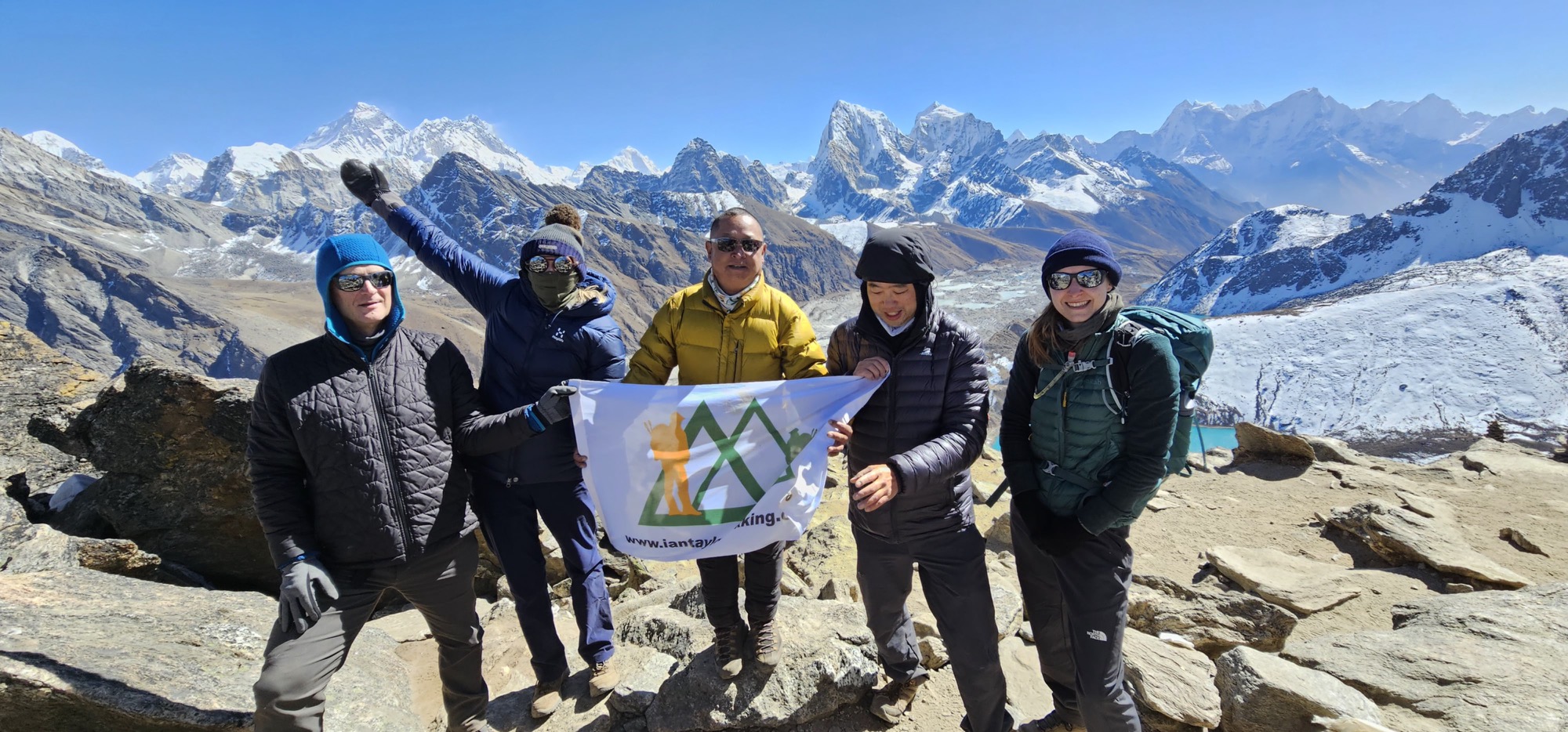It’s legendary. It’s challenging. It’s one of the most famous treks in the world. After the question, how difficult is the trek to Mount Everest? We get the question; how long does it actually trek to Everest Base Camp?
I was lucky enough to stand at the summit of Mount Everest and led over 40+ treks to Everest Base Camp. The Trek to Everest is a trek-through time, history and a journey of personal discovery, so why would you rush that.
The Quick Answer
Most trekkers spend 12–18 days on the round-trip trek from Lukla to Everest Base Camp and back, including acclimatization days. Depending on your itinerary, pace, and chosen route, the journey from Lukla to Everest Base Camp can take anywhere from 7 to 14 days.
Trek With Helicopter Return
We have a lot of people trekking to Everest Base Camp and returning via Helicopter direct to Kathmandu. If you are short on time this is the way to do it. There has been talk and attempts to try and spot this type of Helicopter tourism in the Everest region so be aware it may not be available into the future.
We are not interested in cutting acclimatization to any itinerary on the way to Everest Base Camp and we always have more time on the way up to Mount Everest.
We always have three nights in Namche 3,500m (11,500 feet) on the way to Everest. The Helicopter can cut off three or four days offering you a quicker way to trek to Mount Everest and get back to work if you are short on time.
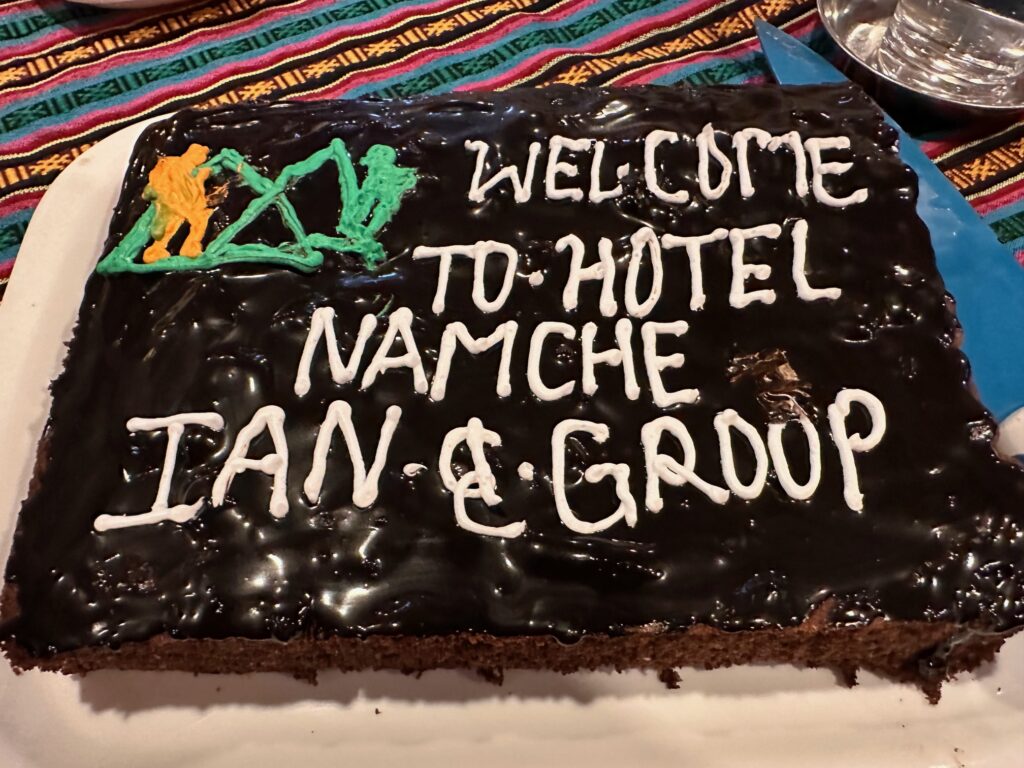
Why Trek Duration Varies
1). The Route You Choose
The classic route or traditional trek to Everest starts in Lukla trekking to Namche, Tengouche towards Everest Base Camp. This is the most direct and popular. Adding in the Gokyo Lakes, sleeping at Everest Base Camp, the Three Passes Trek, or starting your trek from Jiri instead of flying to Lukla will increase the length by several days.
2). Acclimatization Days
At high altitude, your body needs time to adapt. Standard itineraries build in two acclimatization days, one in Namche Bazaar and one in Dingboche. This is not enough! All the research says spend more time around 3,500m/ 11,500 feet for better safety and success.
This is why we have three acclimatization nights in Namche on the way to Mount Everest. These are not rest days but active hikes to higher elevations to help you adjust safely. In our experience over 25 years of going to high altitude
3). Trekking Pace and Fitness
Even if you are fit, you can’t rush acclimatization going to high altitude. A strong trekking background will make each day more manageable, but slow and steady is the key. Keeping heart rates in zone one or two is critical for acclimatization and recovery. I like to stress test my training at higher heart rates zone two and zone three with heavier backpack at sea level before going to high altitude.
4). Weather and Delays
Flights to Lukla can be delayed by fog, wind, or cloud cover. Bad weather may add unplanned days to your itinerary. In recent years most flights in and out of Lukla have been leaving from an airstrip called Ramechhap in the Manthali district.
This is a four-to-five-hour drive from Kathmandu. Most of our flights go directly from Kathmandu to Lukla and Lukla to Kathmandu. If we cannot fly to Lukla, it is extremely important to get on a helicopter. We need to gain access to the Everest trail so we can maintain our important acclimatization schedule. You should plan for this additional expense and be prepared to get on a helicopter as quickly as possible.
Pro Tip: Get your guide to secure the helicopters seats as quickly as possible on that first day. Remember the following day there are people rolling up with booked flight tickets and you get bumped into the back of the line. Get on the helicopter!

Trigger Points of High Altitude
Remember High Altitude starts at 8,200 feet (2,500m). The Trek to Everest is well above this zone. Here’s a chart showing the key trigger points of high altitude and the associated effects on the human body.
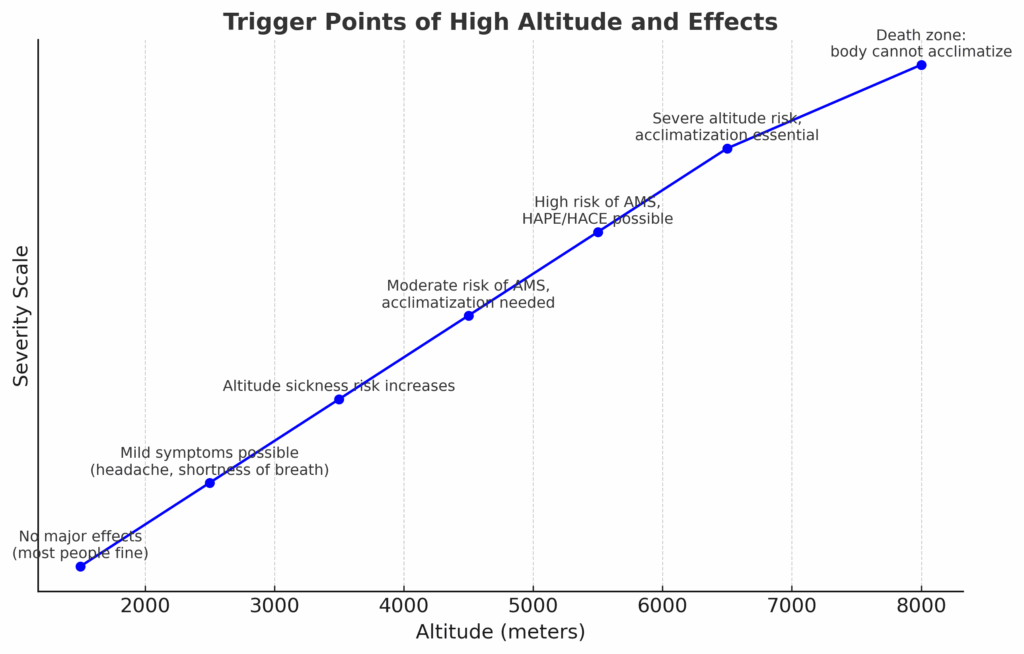
The Best Everest Base Camp Itinerary
After years of research we will only run itineraries with three nights in Namche. This offers our teams a safer route into High Altitude and means we see far less High Altitude issues on our trips to Everest Base Camp. Here’s what the classic 13-day trek looks like:
Brief Itinerary
Day 1: Fly to Lukla (2,860m), trek to Phakding or Monjo
Day 2: Phakding or Monjo to Namche Bazaar
Day 3: Acclimatization day in Namche Bazaar
Day 4: Acclimatization in Namche Bazaar
Day 5: Namche to Tengboche
Day 6: Tengboche to Dingboche
Day 7: Acclimatization day in Dingboche
Day 8: Dingboche to Lobuche
Day 9: Lobuche to Gorak Shep, continue to Everest Base Camp
Day 10: Kala Patthar sunrise, descend to Pheriche
Day 11: Pheriche to Namche Bazaar
Day 12: Namche to Lukla
Day 13: Fly Lukla to Kathmandu
Round-trip distance: about 82 miles or 132 km. The total elevation gain uphill on an Everest Base Camp Trek is 18,324 feet (5,585m) and total downhill on an Everest Base Camp Trek is 15,853 feet (4,832m).

Can It Be Done Faster?
Yes, but with risks. Some experienced trekkers cut the trek to 9–10 days by skipping acclimatization or combining longer sections. However, this greatly increases the risk of altitude sickness.
It is something we would never consider and from experience, not a good idea. A safer option for those short on time is to trek up and then return to Kathmandu by helicopter. This is not always an option. You could also consider doing some hypoxic training at home.
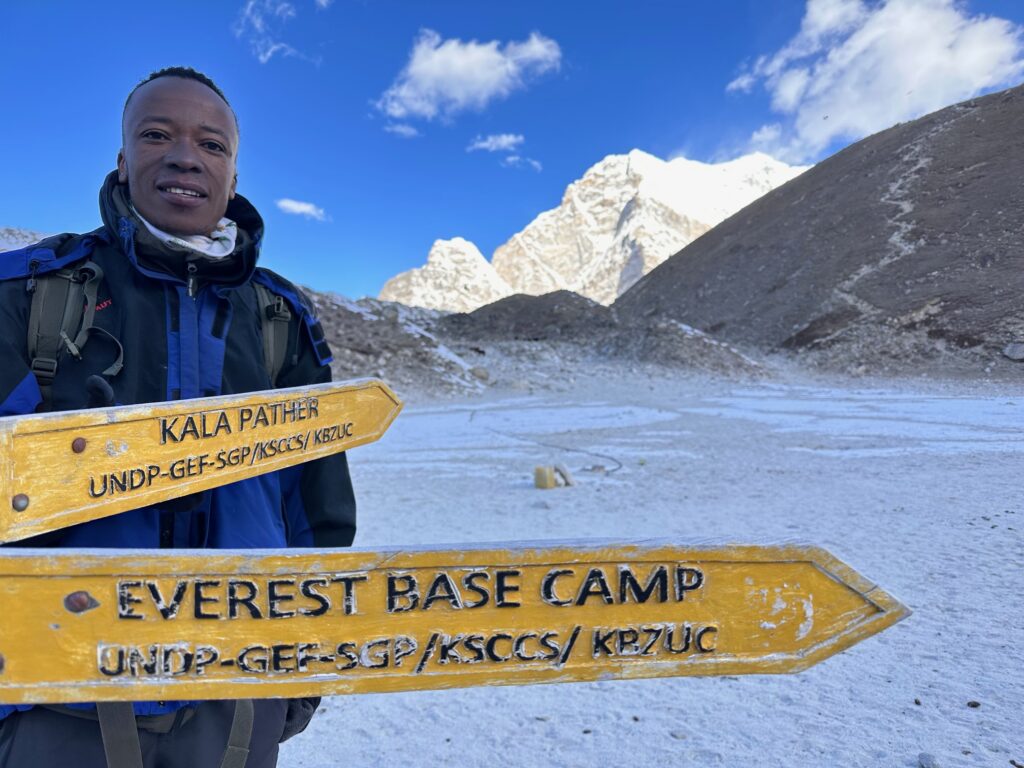
Best Time of Year to Trek
The most reliable trekking seasons are:
• Pre-monsoon (March–May): Longer daylight hours, warmer temperatures, blooming rhododendrons.
• Post-monsoon (October–December): Crisp air, clear skies, normally excellent visibility.
Both windows allow for smoother itineraries with fewer weather delays. It is important to note that you get have weather delays even in the better trekking months. I remember one season, about eight years ago every single trip in April and May needed helicopters to access the Everest region.
Everest Base Camp Trek FAQs
How many days does the Everest Base Camp trek take?
Most trekkers need 12–15 days round-trip from Lukla.
How far is it to Everest Base Camp?
It’s around 82 miles (132 km) round-trip from Lukla to Everest Base Camp, Kala Patthar and back to Lukla.
Do I need to acclimatize?
Yes!! Without proper acclimatization, altitude sickness can end your trek and it does for a lot of people.
Do I need a guide?
Guides and porters make the journey safer, easier, and more rewarding.
What are the Daily Distances
The trail to Everest is not your average trail. It is more challenging with a wide range of terrain that will test your endurance and leg strength. Depending on your route and itinerary, the daily distances on the trail to Everest will vary. If you are picking an Ian Taylor Trekking itinerary, you will find the daily distances on this page.

Acclimatization Explained
We live at 2,300m (7,600 feet) in Colorado and we still follow a specific acclimatization program with three nights in Namche. We know that three nights at 3,500m (11,500 feet) makes a massive difference for moving into higher altitude.
Remember everything above 2,500m (8,200 feet) is considered high altitude and requires very specific acclimatization. We get 100% success on most of our tours to Everest Base Camp because we have three nights in Namche Bazaar on the way up the trail to Mount Everest.

Some Facts About Altitude
At high altitude, the reduced air pressure lowers the amount of oxygen available to the body, leading to hypoxia. In response, the body increases breathing rate and depth, and over time the kidneys release erythropoietin (EPO) to stimulate red blood cell production, improving oxygen transport.
The heart also works harder, with blood vessels dilating in the brain and constricting in the lungs, placing additional strain on the cardiovascular system. Despite these adaptations, rapid ascent can overwhelm the body, resulting in altitude sickness with symptoms such as headaches, nausea, dizziness, fatigue, and appetite loss. Preventive measures include gradual ascent, hydration, and rest to allow proper acclimatization.
If acclimatization fails, more severe conditions may develop. High-altitude cerebral edema (HACE) occurs when fluid leaks into brain tissue, causing confusion, loss of coordination, and in extreme cases, coma. High-altitude pulmonary edema (HAPE) results from fluid buildup in the lungs, leading to breathlessness, coughing, and bluish skin. Both are rare but life-threatening and require urgent treatment.
Beyond these risks, high altitude can also cause dehydration due to dry air, impair cognitive function from reduced oxygen, and increase sensitivity to cold and ultraviolet (UV) radiation. Together, these effects highlight the importance of preparation, awareness, and proper pacing when traveling to high elevations.
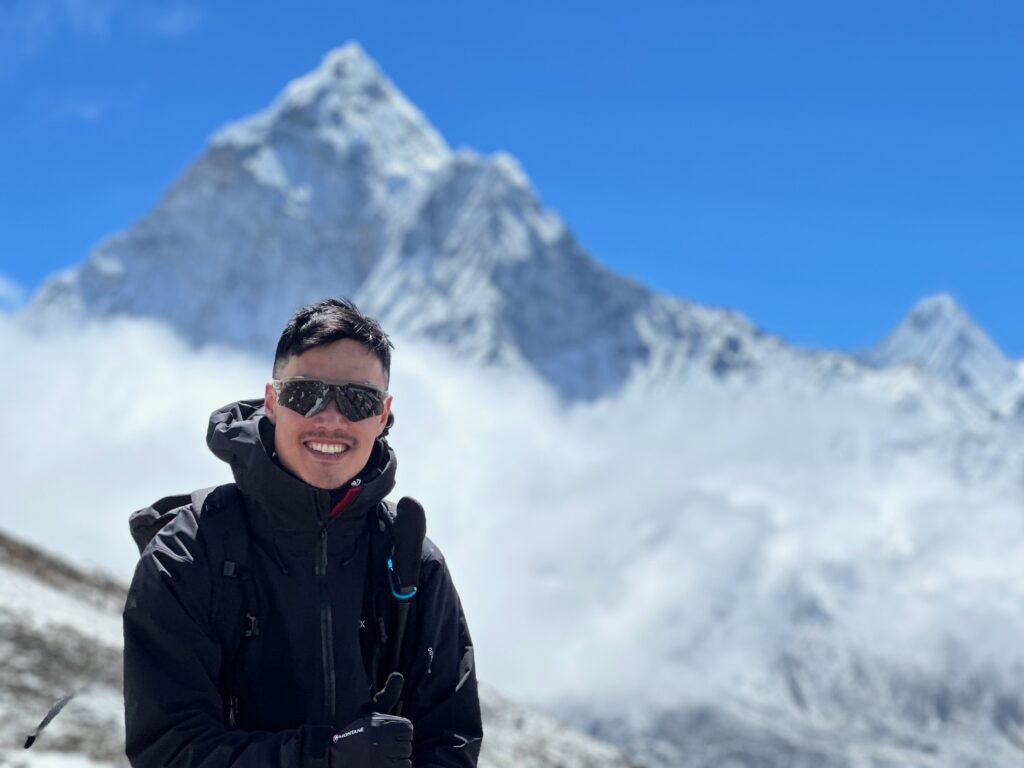
Going to High Altitude Versus Staying at High Altitude
We get asked all the time why we need more days going to Everest Base Camp, when we only need 8 days for Kilimanjaro. We see far more altitude related issues on the Everest trek because we spend more time at higher altitude. This means we need more acclimatization when we want to go and stay above 14,500 feet (4,420m)
Training and Preparation Advice (fitness, gear, mental resilience)
Trekking to Everest Base Camp 17,200 feet, Kala Pathar 18,520 feet and all the way back to Lukla is not easy. It requires specific endurance, balance and leg strength for steep terrain and stair work up and down. Read more training advice about how best to prepare for the Everest Base Camp Trek. Feel free to check out our step by step approach to training.
Specific physical training is needed to be successful. A well-rounded training plan should include the following:
– Hill work with weighted backpack. Build up to carrying double the weight you will carry on the trail.
– Stairmaster with weighted backpack.
– Incline treadmill (20+ degree angle) with a backpack
– Training for the downhill
– Specific gym training
– Core stability
– Yoga and flexibility
Building a good base of endurance is critical for success. This means you most of your training around 60% to 70% should be in your zone 2 heart rate building up slowly over time. The important things to remember are doing this on hills or stairs help stress test you body more targeted to what you will be doing on the trek to Mount Everest.
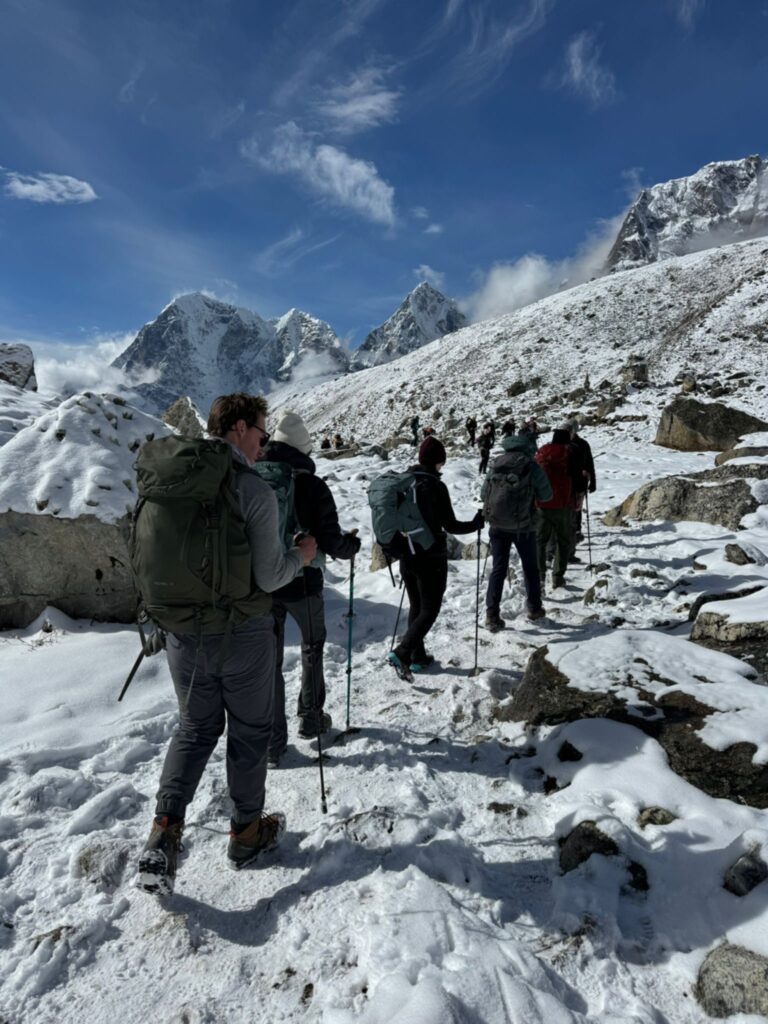
Seasonal Breakdown For Everest Base Camp Treks
Trekking to Mount Everest is best done in two main and distinct seasons. The first is trekking before the monsoon in February, March, April or May each year. The monsoon season is generally in the months of June, July and August. It can linger well into September.
The next season follows the monsoon rains. These trekking months are September, October, November and December. You can read more on the best trekking months here.
Spring Season (March – May)
Pros:
1). Considered one of the best times for trekking and climbing, especially in Nepal and the Himalayas.
2). Clear skies and excellent mountain views in the mornings.
3). Warmer temperatures at lower elevations compared to autumn.
4). Longer daylight hours, giving more flexibility on trekking days.
5). Rhododendron forests and wildflowers are in full bloom, adding stunning color to the trails.
Popular time for major Himalayan expeditions, including Mount Everest, which creates a lively atmosphere in base camps.
Cons:
1). The mountains can become increasingly hazy in late spring due to dust and heat rising from the lowlands.
2). Trails and teahouses can be crowded on route Everest Base Camp and Annapurna Circuit.
3). Higher risk of afternoon clouds and occasional rainfall as you move toward late May.
Helicopters can be challenging to secure in the first 8 days of April. The Everest expeditions make the trail busier with porters and animals bringing in daily supplies to Everest Base Camp.
Autumn (September – November)
Pros:
1). The most popular trekking season with stable weather and excellent visibility.
2). Post-monsoon air is fresh and clear, providing some of the best mountain panoramas of the year.
3). Comfortable daytime temperatures at mid-altitudes.
4). Festivals such as Dashain and Tihar add cultural richness to the experience.
5). Reliable conditions for both trekking and high-altitude climbing.
Cons:
1). Trails and lodges are at their busiest, especially in October.
2). Prices for flights and accommodations can be higher due to demand.
3). Days are shorter than in spring, which means less time for longer treks each day.
Winter (December – February)
Risks & Challenges:
1). Harsh cold, especially above 4,000m, with nighttime temperatures plummeting well below freezing.
2). Snowfall can block high passes (like the Cho La in the Everest region), making them impassable.
3). Many lodges at higher altitudes close for the season, limiting accommodation options.
4). Short daylight hours make trekking days more restricted.
Why Some Still Go:
1). Fewer crowds and very quiet trails.
2). Crystal-clear skies with sharp views on good days.
3). Lower costs and more availability in lodges.
4). Great for lower-altitude treks like Namche Bazaar Trek, Ghorepani Poon Hill, Langtang Valley, or cultural treks.
Monsoon (June – August)
Risks & Challenges:
1). Heavy rainfall in most trekking regions, leading to slippery trails and frequent landslides.
2). Cloud cover often obscures mountain views.
3). High humidity and heat in lower regions can be uncomfortable.
4). Leeches are common on many trails.
5). Increased risk of flight cancellations, particularly in and out of Lukla for Everest treks.
Alternative Itineraries
Our most popular Everest trekking itinerary is our Sleeping at Everest Base Camp Trek. We still have three nights in Namche Bazaar and we have added a night into the itinerary so you can stay on the glacier in Everest Base Camp.
One of my favorite treks to Everest Base Camp is via Gokyo Lakes. This is one of our more challenging Everest trips. Our EBC via Gokyo Lakes trek takes you off the main trail to Mount Everest to Gokyo lakes, Gokyo Ri and hiking over the challenging Cho La pass into Everest Base Camp. This trek does hike back down the traditional trail back to Lukla.
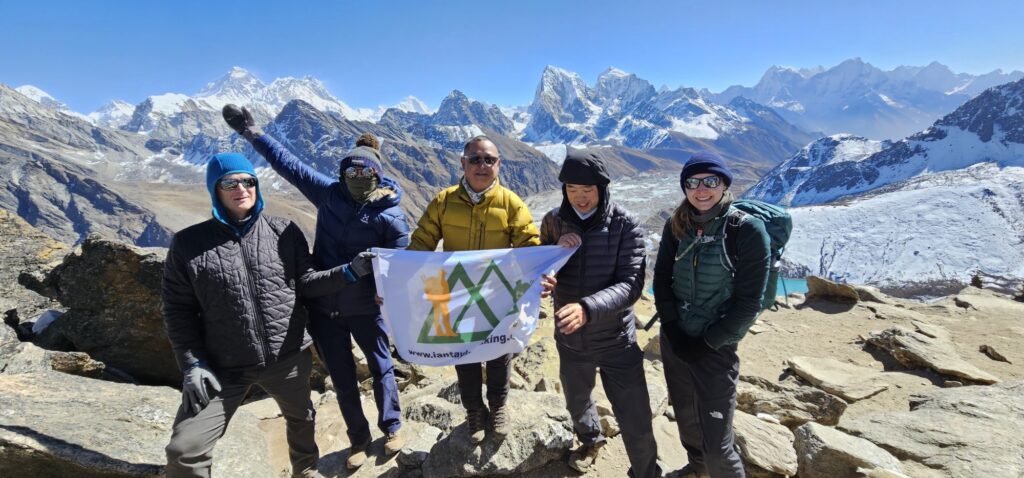
Three Passes Trek to Mount Everest
This is a challenging trek over three high passes. We run two of these trips per year. One in the pre-monsoon trekking season and one in the post monsoon trekking season. Firstly, we like to hike the Kongma La pass then go to Everest Base. Secondly, we then hike over the Cho La Pass to Gokyo and hike up Gokyo Ri.
Finally we like to hike the Renjo La pass before return to Namche and back to Lukla. This is a trekkers trip and not to be taken lightly. Contact us for more information.
Trek to Mount Everest With Helicopter Return
Trekking to Mount Everest and returning to Kathmandu via Helicopter has been a more popular option in recent years. There have been many attempts to stop helicopters managing this style of Everest tour. To date this is still an option. A seat on a helicopter from Gorak Shep to Kathmandu will be approximately USD $1,200.
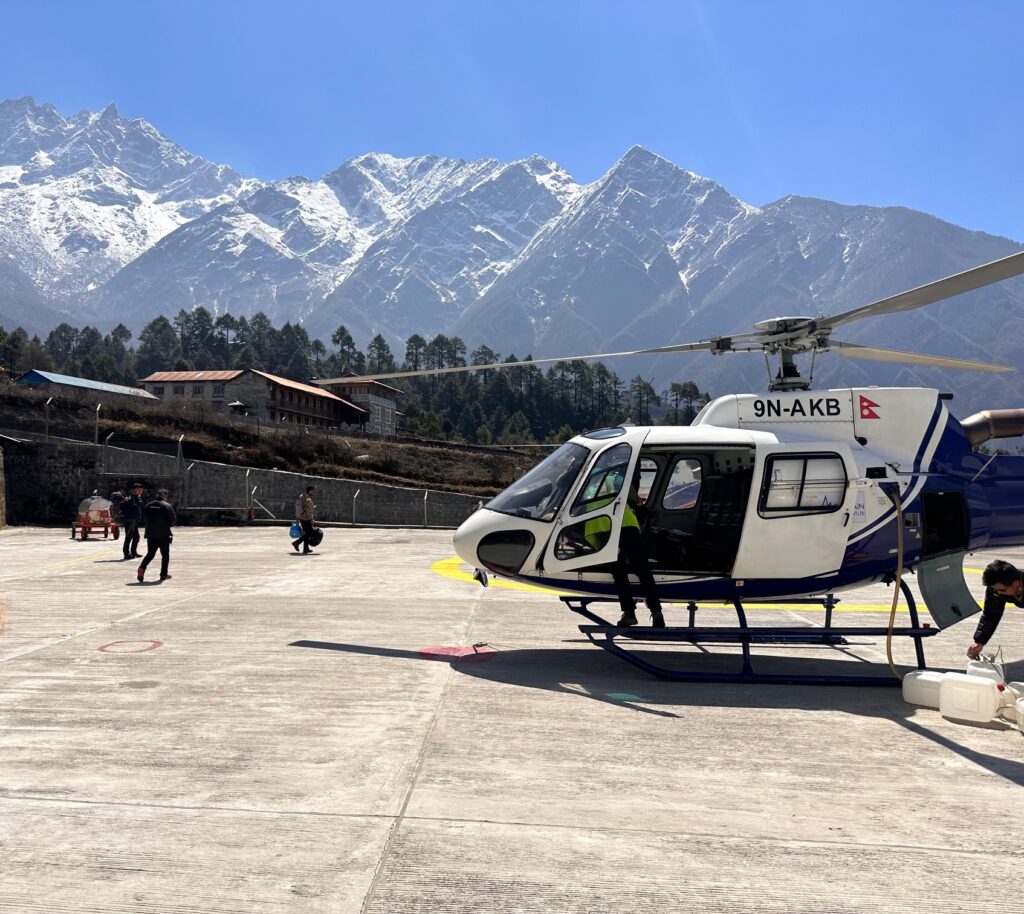
Insider Tips from 25 years of Trekking to Everest
Over the years we have found the correct pace along with three nights in Namche offers our groups more safety trekking to Everest Base Camp. Staying hydrated is extremely important for any trek at high altitude. We recommend drinking one liter in the morning. Bring two liters with you hiking in the morning and you can top up with another liter for hiking after lunch.
You can be fit, and follow a good acclimatization and still struggle with sleep. Above 11,500 feet (3,500m) we recommend taking 400/600mg of Ibuprofen to aid sleep. You should consider Diamox (Acetazolamide) 125mg in the morning and 125mg in the afternoon.
Success on the Everest trek also comes down to good personal hygiene and staying in better lodges with better food. We have hand picked the lodges we use on the trek to Everest for best food and accommodation.
We have a 100% success rate on most of our treks to Mount Everest when people come fully prepared for the trek.
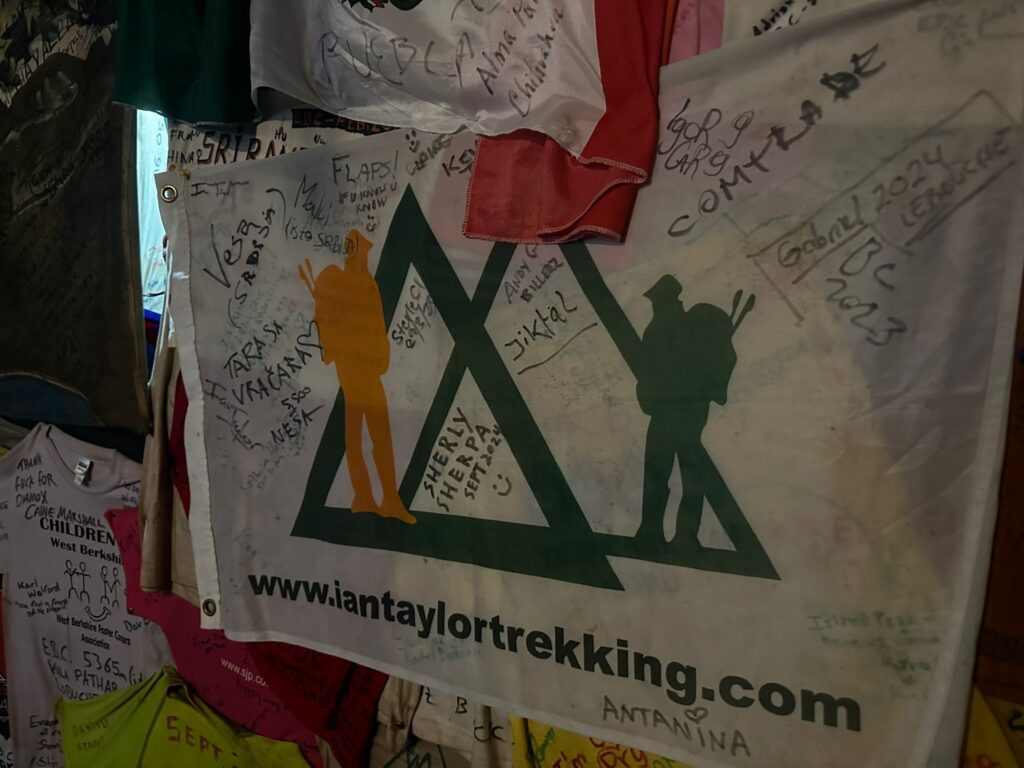
Trek With Our Award-Winning Team
The Everest Base Camp trek is not just about the destination—it’s about the journey through Sherpa villages, Buddhist monasteries, and the world’s most dramatic mountain scenery. Follow us on Instagram.
Plan for 13 to 18 days for a safe, enjoyable trek that gives your body the time it needs to adjust to the lack of oxygen. Check out our upcoming trips. I hope this information about how long does It take to trek to Everest Base Camp was useful.
At Ian Taylor Trekking, we’ve led thousands of trekkers to Everest Base Camp, and our carefully designed itineraries give you the best chance of success. More importantly our itineraries, pace and management of the trip offers you a safter and more enjoyable experience.
